The Kingdom of Kush
The Kingdom of Kush, flourishing between approximately 1070 BCE and 350 CE, was a major civilization in northeastern Africa, centered in what is now modern-day Sudan. Positioned along the Nile River, Kush played a pivotal role in regional politics, trade, and culture, often interacting with its more famous northern neighbor, Egypt. Renowned for its wealth, monumental architecture, and artistic achievements, the Kingdom of Kush is one of Africa’s great early civilizations, demonstrating the sophistication and interconnectedness of ancient African societies.
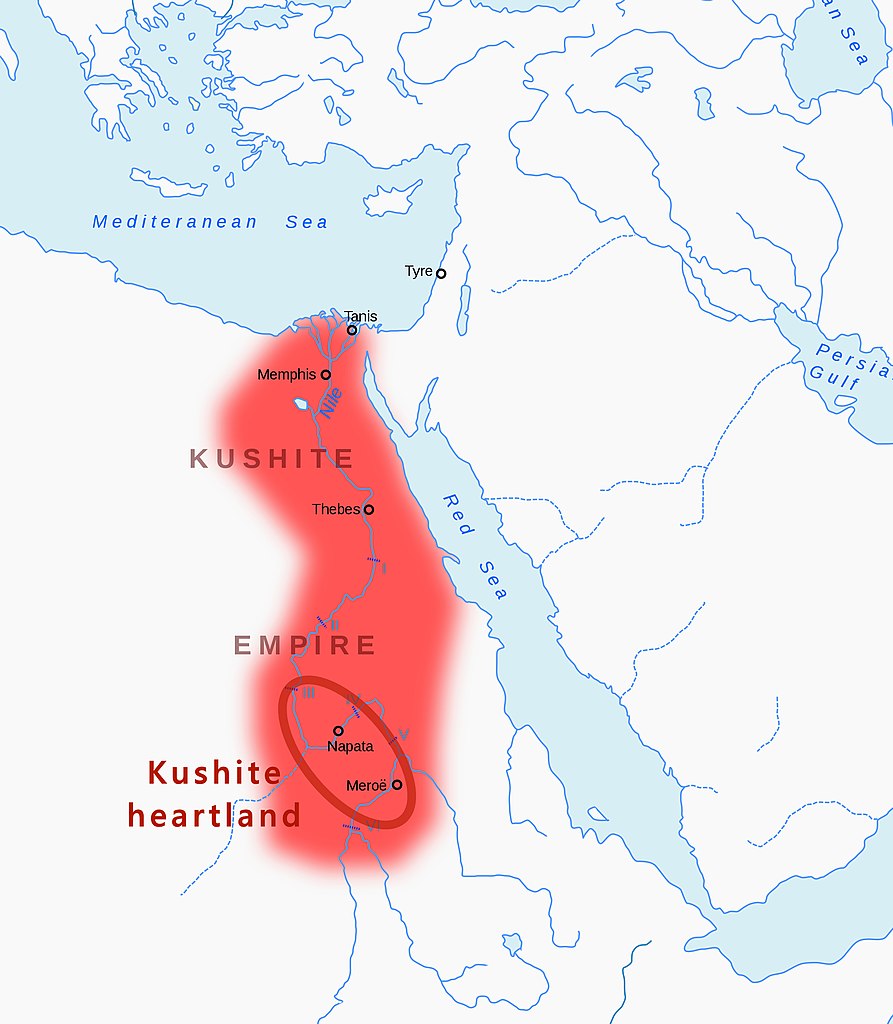
Kushite heartland, and Kushite Empire of the Twenty-fifth Dynasty of Egypt, circa 700 BCE. Source: Wikimedia Commonsꜛ (license: CC BY-SA 4.0)
Origins and early development
The origins of Kush can be traced to the ancient Nubian cultures that predated it, such as the Kerma civilization (ca. 2500–1500 BCE). After a period of Egyptian dominance during the New Kingdom (ca. 1550–1070 BCE), Kush reemerged as an independent kingdom centered at Napata around 1070 BCE. The fertile lands along the Nile supported agriculture, while rich deposits of gold, ivory, and other resources contributed to Kush’s wealth and influence.

Nubian Prince Heqanefer bringing tribute for The Egyptian King Tutankhamun, 18th dynasty, Tomb of Huy. c. 1342 – c. 1325 BCE. Source: Wikimedia Commonsꜛ (license: CC BY-SA 4.0)
The early Kingdom of Kush was characterized by strong ties to Egypt, adopting many aspects of Egyptian culture, religion, and governance. However, it also developed its own distinct identity, blending indigenous traditions with external influences.
Cultural achievements and society
Kushite culture is perhaps best exemplified by its monumental architecture, including pyramids, temples, and palaces. The pyramids at Meroe, built during the later phase of the kingdom, are smaller than their Egyptian counterparts but equally striking, showcasing unique architectural styles. Temples, such as those at Jebel Barkal, were centers of religious and political life, dedicated to deities like Amun and Isis.
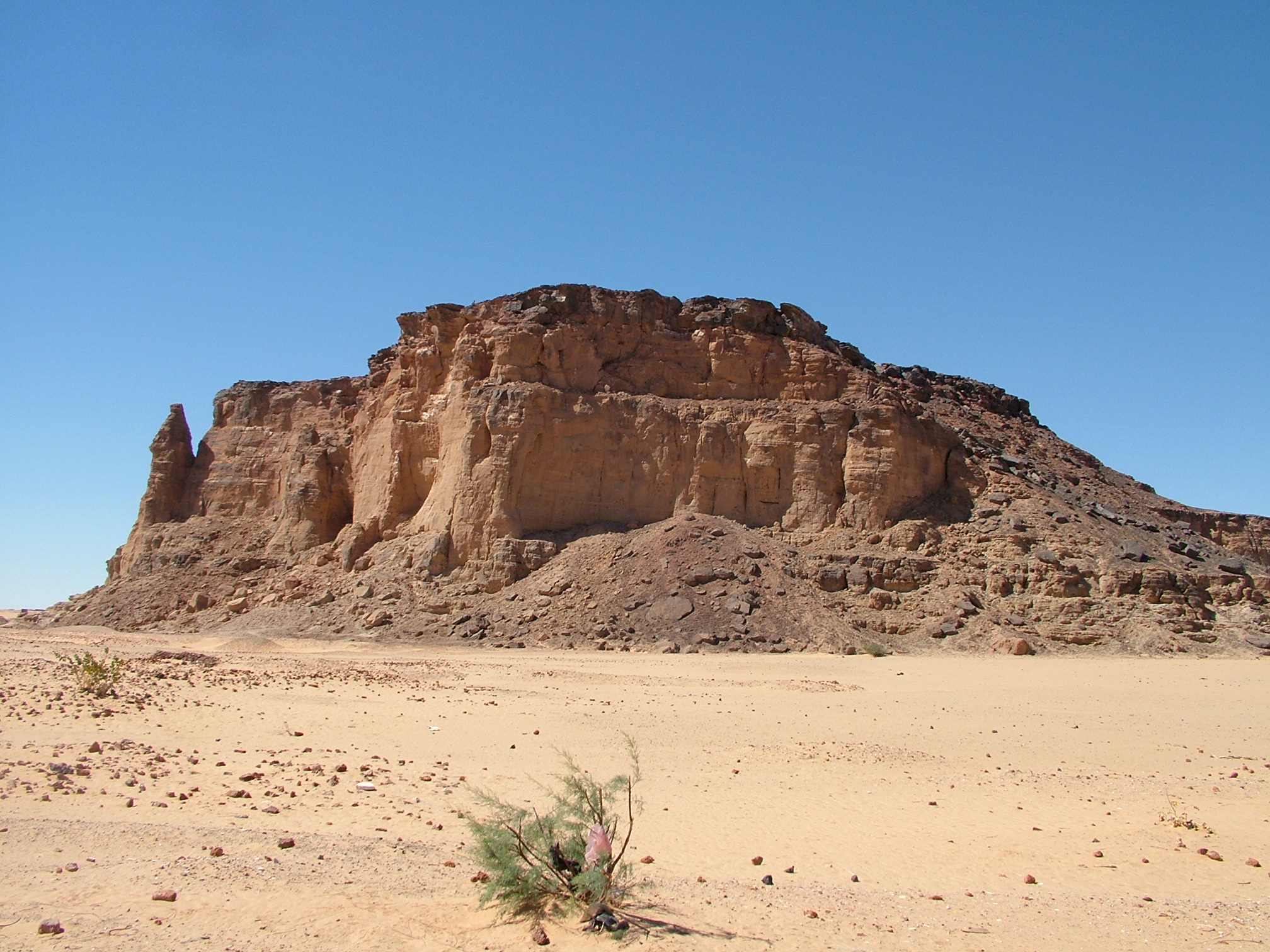
Jebel Barkal was venerated as residence of Amun and became an essential symbol of Kushite kingship. Source: Wikimedia Commonsꜛ (license: CC BY-SA 4.0)
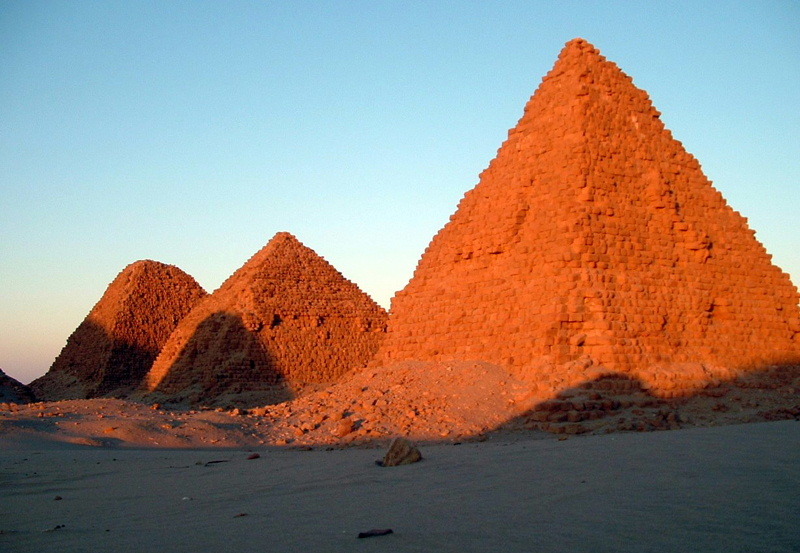
Pyramids of Nuri, built between the reigns of Taharqa (circa 670 BCE) and Nastasen (circa 310 BCE). Source: Wikimedia Commonsꜛ (license: CC BY-SA 2.0)
Art and craftsmanship flourished in Kush, with goldsmithing, pottery, and sculpture reaching impressive levels of sophistication. Kushite art often blended Egyptian motifs with indigenous elements, reflecting the kingdom’s dual cultural heritage.
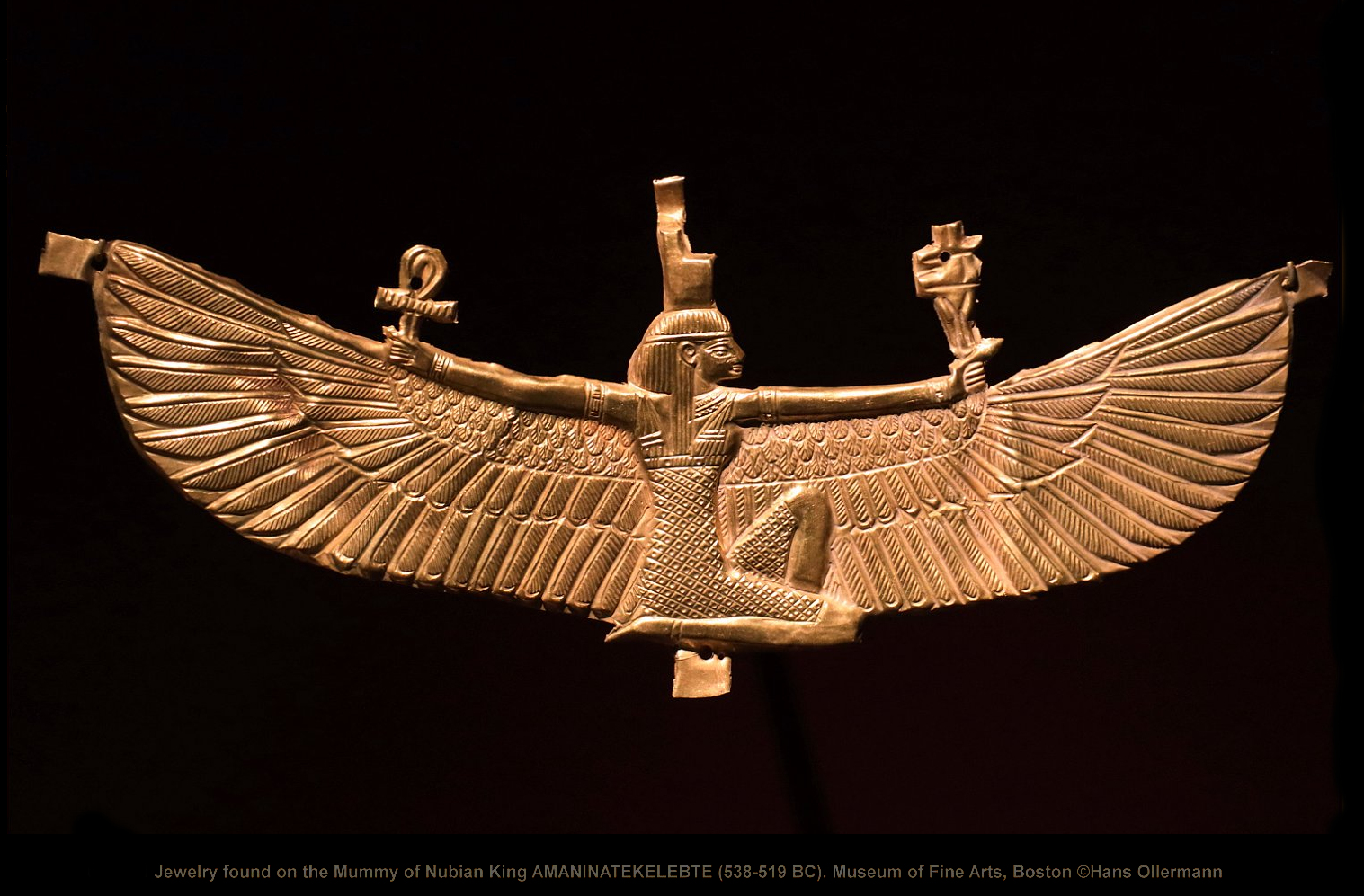
Jewelry found on the Mummy of Nubian King Amaninatakilebte (538-519 BCE), Nuri pyramid 10. Source: Wikimedia Commonsꜛ (license: CC BY-SA 2.0)
Kushite society was hierarchical, with a powerful king (known as the “qore”) at the top, supported by priests, nobles, and military leaders. Women played significant roles in Kushite society, with queens and queen mothers (“kandakes”) wielding considerable political and religious influence. This emphasis on female leadership sets Kush apart from many contemporary civilizations.

The pyramids of Meroe. The site is a UNESCO World Heritage today. Source: Wikimedia Commonsꜛ (license: CC BY-SA 2.0)
Aerial view of the Nubian Pyramids near Meroe from 2001. Source: Wikimedia Commonsꜛ (license: CC BY-SA 1.0)

Amun temple of Jebel Barkal (reconstruction), originally built during the Egyptian New Kingdom but greatly enhanced by Piye. Source: Wikimedia Commonsꜛ (license: CC BY-SA 3.0)

The so-called ‘Roman kiosk’ (right) and temple of Apedemak (left), Naqa, 1st century CE. Source: Wikimedia Commonsꜛ (license: CC BY-SA 4.0)
Economy and trade
The economy of Kush was built on agriculture, mining, and trade. The Nile provided a reliable source of irrigation for crops such as wheat, barley, and millet, while the kingdom’s vast mineral wealth, particularly in gold, made it a major player in regional commerce. Kush controlled trade routes connecting sub-Saharan Africa with Egypt and the Mediterranean, facilitating the exchange of goods like ivory, ebony, and exotic animals.

Kushite delegation on a Persian relief from the Apadana palace, c. 500 BCE. Source: Wikimedia Commonsꜛ (license: CC BY-SA 4.0)
Trade networks extended southward into sub-Saharan Africa and eastward to the Red Sea, linking Kush with the Arabian Peninsula and beyond. This connectivity enriched Kushite culture and economy, making it a hub of interaction between Africa, the Middle East, and the Mediterranean.

Left: Bronze head of Emperor Augustus found under the staircase of a temple in Meroe, 27 - 25 BCE. Source: Wikimedia Commonsꜛ (license: public domain) – Right: Prince Arikankharer slaying his enemies, Meroitic, beginning of first century AD, sandstone. Source: Wikimedia Commonsꜛ (license: public domain)
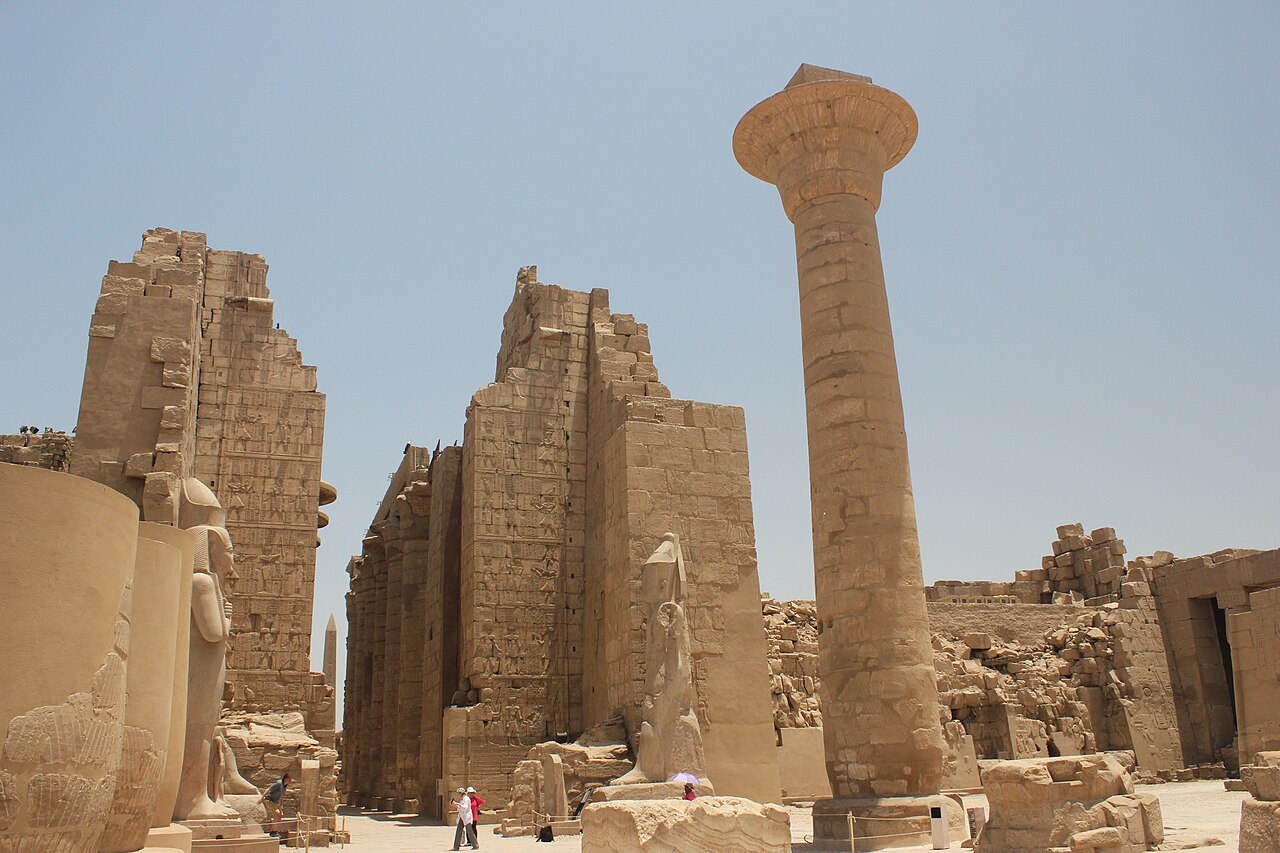
So-called ‘Taharqa’s kiosk’, Karnak Temple. Source: Wikimedia Commonsꜛ (license: CC BY-SA 4.0)
Comparisons with other civilizations
Nok Culture
The Kingdom of Kush and the Nok culture share a focus on metallurgy and artistic expression. While the Nok were pioneers of ironworking in West Africa, the Kushites excelled in goldsmithing and bronze work. Both cultures produced remarkable figurative art, with the Nok terracottas paralleling the Kushite sculptures in their symbolic and ritualistic significance. However, Kush’s monumental architecture and centralized political structures contrast with the more decentralized and village-based organization of the Nok culture.
Egypt
Kush’s relationship with Egypt was complex, marked by periods of conflict, conquest, and cultural exchange. During the 25th Dynasty (ca. 744–656 BCE), known as the Kushite or Nubian Dynasty, Kushite rulers controlled Egypt, unifying the Nile Valley under their rule. While Kush adopted many aspects of Egyptian culture, including hieroglyphic writing, religious practices, and artistic styles, it also preserved its unique traditions, such as its own language and distinctive pyramid architecture.
Mesopotamia
Like Mesopotamia, Kush developed a stratified society with centralized governance and monumental architecture. However, while Mesopotamia’s ziggurats served as temples, Kushite pyramids were primarily funerary structures. Additionally, Mesopotamia’s reliance on cuneiform writing contrasts with Kush’s use of the Meroitic script, an undeciphered language that underscores the uniqueness of Kushite civilization.

Meroitic ostracon, 1st c. CE, sandstone. Source: Wikimedia Commonsꜛ (license: CC BY-SA 3.0)
Rest of Africa
Kush was one of the most advanced early African civilizations, influencing and interacting with other cultures on the continent. Its trade networks linked it with sub-Saharan Africa, facilitating cultural and economic exchanges. Unlike the nomadic pastoralist societies of the Sahara or the decentralized communities of West Africa, Kush developed a centralized state with significant urban centers, monumental architecture, and an economy based on agriculture and trade.
Decline and legacy
The decline of Kush began in the late 4th century CE, likely due to a combination of environmental changes, overexploitation of resources, and pressure from external forces, including the rise of the Aksumite Empire to the east. By 350 CE, the city of Meroe, once the vibrant capital of Kush, was abandoned.

This gypsum panel shows the Assyrian army attacking the Egyptian city of Memphis and commemorates the final victory of the Assyrian king Ashurbanipal II over the Egyptian king Taharqa in 667 BCE. This wall slab was originally painted for the interior walls of Ashurbanipal’s palace at Ninevah. At the top, the overwhelming wave of the Assyrian army storms the Egyptian fortress tries to set fire to the gate and undermines the walls. The Nubian soldiers, recognizable by their single upright feathers on their heads, are being marched off as prisoners. Egyptian civilian prisoners are shown as a group with two children on a donkey. Below is the River Nile with fish and crabs. Neo-Assyrian Period, 645-635 BCE. Source: Wikimedia Commonsꜛ (license: CC BY-SA 4.0)
Despite its decline, Kush left an enduring legacy. Its cultural and technological innovations influenced later African civilizations, and its history highlights the sophistication and interconnectedness of ancient Africa. The pyramids of Meroe and other archaeological remains continue to be celebrated as symbols of African heritage and ingenuity.
References
- Derek A. Welsby, The Kingdom of Kush: The Napatan and Meroitic Empires, 1998, Markus Wiener Publishers, ISBN: 978-1558761810
- David N. Edwards, The Nubian Past: An Archaeology of the Sudan, 2004, Routledge, ISBN: 978-0415369886
- László Török, The Kingdom of Kush: Handbook of the Napatan-Meroitic Civilization, 1998, Brill Academic Publishers, ISBN: 978-9004104488
- Joyce Haynes, Nubia: Ancient Kingdoms of Africa, 1992, Museum of Fine Arts, Boston, ISBN: 978-0878463626
- Peter Shinnie, Ancient Nubia, 2014, Routledge, ISBN: 978-1138010734
- William Y. Adams, Nubia: Corridor to Africa, 1984, Princeton University Press, ISBN: 978-0691093703
- Ippolito Rosellini, The Monuments of Egypt and Nubia, 2003, The American University in Cairo Press, ISBN: 978-9774247897
- Claude Rilly and Alex de Voogt, The Meroitic Language and Writing System, 2012, Cambridge University Press, ISBN: 978-1107008663
- Robert Bianchi, Daily Life of the Nubians, 2004, Greenwood Press, ISBN: 978-0313325014




















comments